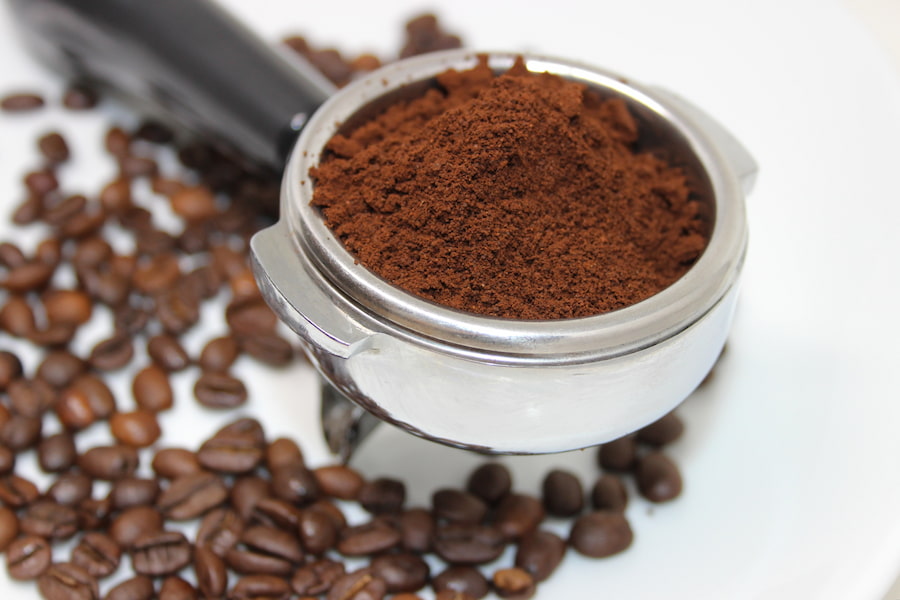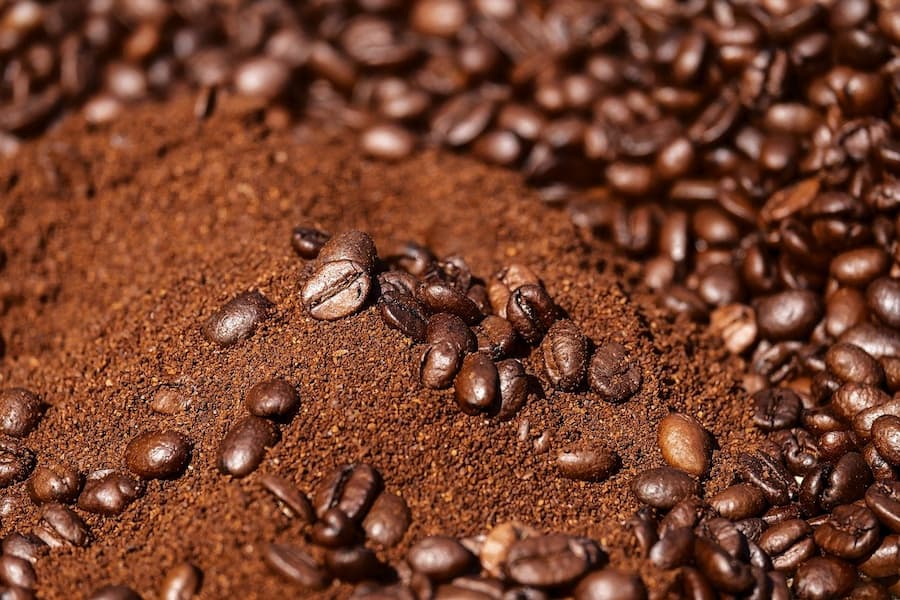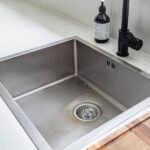The definition of the perfect cup of coffee is different for everyone. However, brewing coffee grounds comes with its challenges, especially if the wet coffee grounds end up in the sink. If you have a clogged coffee maker or sink, then keep reading to discover what dissolves coffee grounds to unclog the coffee maker or drain pipe.
What Dissolves Coffee Grounds?
Alkaline solutions can effectively dissolve coffee grounds. These work by breaking the oily bonds between the coffee grounds, so you can easily flush out the fine particles from your coffee machine or your sink’s drainage system. You can also use baking soda for dispersing coffee grounds since it is an alkaline substance.

There are other strong caustic drain cleaners that can dissolve coffee grounds. However, these products can also damage other materials they come in contact with, such as the parts of the coffee maker or lining of the drain pipe. Keep reading to discover the correct methods for dissolving coffee grounds.
Why Is It Difficult to Dissolve Coffee Grounds?
Once you are done brewing coffee, it is important to discard the used coffee grounds properly to save yourself some hassle. As I mentioned above, dumping the coffee grounds in the sink can lead to the blockage of the drain pipe or garbage disposal.
You can flush out the occasional and accidental coffee grounds from the drain pipe. However, if your coffee grounds frequently end up in the sink, it can cause a build-up. This is because the coffee grounds stick to the lining of the pipe, accumulating together to form a clump.
So, why are coffee grounds so hard to dissolve? There are two main reasons for that:
Solidification of Oils
Coffee beans have naturally occurring oils. When ground coffee is brewed, the grains are subjected to hot water and pressure in your brewing equipment. Consequently, the oils are released to the surface during the brewing process. When the coffee grounds cool down, the oils on the fine grains solidify causing the coffee grounds to clump together.
The main challenge with dissolving coffee grounds is breaking down the oily bonds, which are thick and saturated. They prevent any liquid from penetrating the outer surface and soaking the grounds. Therefore, you cannot disperse the coffee grounds using just hot water.
Organic Nature of Coffee Grounds
Coffee beans are seeds inside the cherries found on the coffee plants. They are made up of polysaccharides, which are insoluble, fibrous compounds. Consequently, they are difficult to break down and dissolve. However, when the beans are roasted, their anatomy changes slightly. The heat from the roasting process causes the coffee beans to become partially soluble. The soluble part of the coffee beans is what ends up in your cup after brewing. The remaining insoluble organic matter still accounts for 70% of the coffee grounds, which is very hard to dissolve.
What Can Dissolve Coffee Grounds
As I discussed above, it is a challenge to dissolve the coffee grounds. However, it is not impossible. There are a few very powerful chemicals that can do the job and restore your sink back to perfect working conditions. These chemicals are often found in heavy-duty drain cleaners or sold as cleaning supplies.
The caustic chemicals are capable of disintegrating the coffee grounds by breaking down the oils and dissolving the insoluble matter. However, they are also very dangerous to use. The strong cleaning products are highly corrosive and can cause damage to the drainpipe, especially if you use them regularly.
You should handle such cleaning products with extreme caution, wear protective gear, and keep the room well-ventilated. Moreover, you should never use these chemicals to clean your coffee maker, as the remaining residues can mix with your coffee. Finally, use these chemicals as the last resort, if the below-mentioned remedies fail to yield results.

What Should You Use to Remove the Coffee Grounds
I have established that coffee grounds are difficult to remove. So, what should your next course of action be to unclog the sink or your coffee maker?
Rather than trying to dissolve the grounds, try to break the bonds between the oils. Once you do that, it will be easier to disperse and flush the coffee grounds out of the equipment. The oily bonds are relatively easier to break as compared to the organic insoluble matter present in the fine grains. There are two ways to do that:
Alkaline Solution
Alkaline cleaning solutions are specially formulated to tackle the issue of accumulated coffee grounds. They are primarily used for cleaning out the small crevices of the coffee machines and unclogging the brew heads and portafilters.
The solution is safe to use for coffee makers, even for areas that come in contact with your drinking coffee. Moreover, it does not damage your machinery. Thus, you can also utilize the alkaline solution for cleaning out the plumbing underneath your sink.
Baking Soda
Baking soda is also alkaline in nature, making it useful for breaking the oily bonds and removing the coffee grounds from pipes and crevices. However, you will need a lot of baking soda to dislodge the clumped coffee grounds.
For maximum impact, use baking soda along with vinegar to get rid of the issue completely. Vinegar itself may not be effective enough if the clog is very severe or if the coffee grounds have been accumulating for a long while.
How to Remove Coffee Grounds From the Sink
Here is a step-by-step way to remove the coffee grounds from the drainpipe of the sink using baking soda and vinegar:
- Pour a pot of boiling water in the sink to soften the clump of coffee grounds in the drain pipe.
- Slowly add about a cup of baking soda to your drain pipe.
- Mix half a cup of vinegar with half a cup of water and pour the mixture down the drain.
- Immediately close the drain opening using the drain plug and wait for 10 to 15 minutes.
- Meanwhile, boil another pot of water and pour it down the drain after 10 to 15 minutes have elapsed.
The reaction between the baking soda and vinegar helps loosen the coffee grounds while the boiling water flushes out the fine grains. The process works well for small clogs, but you may need to contact a plumber for anything too severe.
How to Remove Coffee Grounds From the Coffee Machine
You can use either baking soda or vinegar to clean the coffee maker. Here is what you need to do:
- Fill the reservoir with either equal quantities of vinegar and water or a mixture of baking soda and water in the ratio 1:2.
- Run the coffee cycle.
- Pour out the mixture and wash the reservoir thoroughly.
- Fill the reservoir with water and run the coffee cycle again to remove the cleaning solution’s taste and smell.
- You may want to repeat step 4 a number of times until the coffee machine is completely clean.

Related Questions
Do Coffee Grinds Damage Disposal?
No, ground coffee does not damage the garbage disposal. In fact, it can eliminate odors and take away the rancid smell that occasionally results from rotting food. However, you should not pour your coffee grounds into the disposal as it can cause clogging, due to a number of reasons I discussed above.
Can Coffee Grounds Be Composted?
Just like some of the coffee filters that are compostable, yes, you can compost coffee grounds, since they are organic matter and can be beneficial for your compost heap. They provide the soil with nitrogen and eliminate earthworms. However, they are considered “green compost material.” They need to be balanced by “brown compost material,” such as dried leaves.
Conclusion
Coffee grounds are tough to dissolve due to the insoluble nature and the oils present on the surface. However, you can disintegrate the grounds and unclog your coffee maker or sink using a specifically designed alkaline solution or a combination of baking soda and vinegar.


